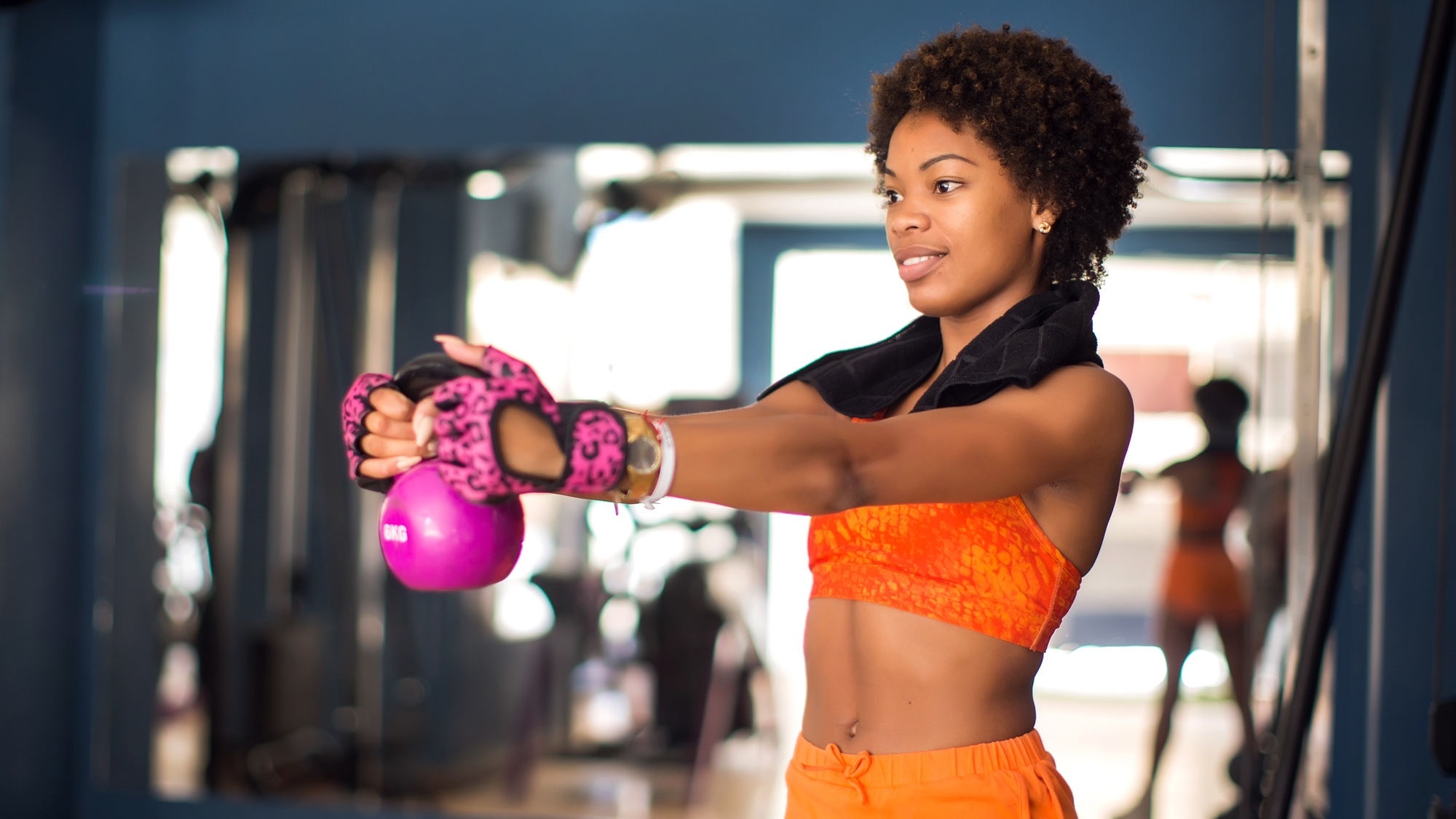
Big biceps, triceps, deltoids and chest muscles could be up for grabs using one kettlebell and these seven kettlebell exercises, according to the man Marcus Filly, who is a kettlebell connoisseur.
If you want to grow lean upper-body muscle, it's a process. “To grow muscle, think global rather than local,” Filly writes of his upper-body kettlebell workout on YouTube. “So include big compound moves as well as isolation. But when it’s time for a hypertrophy hit, this workout will do the trick.”
By hypertrophy, Filly is referring to the process of growing muscle. This workout guarantees to hit your upper body hard, targeting and strengthening muscles all over. Once is enough for a chest and back day pump, or add to your strength program for longer-term results. Grab a kettlebell, and read on for the workout.

These exercises are programmed as a superset, so you'll perform the exercises back-to-back without rest, then rest between sets or supersets, depending on your experience. Watch the video for tips on perfecting your form, and learn how to hold the kettlebell properly here.
If you’re a beginner to exercise or just returning from injury, remember to lift within your abilities and stop if you experience pain, especially in the shoulders, elbows or wrist joints.
Marcus Filly's 7-move upper-body kettlebell workout
Here's what to expect.
Superset 1: 3 sets
Get instant access to breaking news, the hottest reviews, great deals and helpful tips.
- Crush grip 90/90 floor press 10-12 reps
- Dual grip kettlebell push-up (hammer and narrow grip) 6 reps per grip.
Superset 2: 2 sets
- Horn grip curls 10-12 reps
- Tall kneeling hammer grip curl 8-10 rep
- Half kneeling curl eccentric 6 reps per arm.
Superset 3: 3 sets
- Upright row to strict press 8 reps per arm
- Tall kneeling hammer grip overhead tricep extensions 10-12 reps
You’ve got Filly to thank for this world of pain. He believes kettlebells are the best tool in the gym for minimalist functional training, and we couldn’t agree more. Simply adapting variables like grip, rep cadence and body positioning transforms your training stimulus, giving you access to a neverending range of exercises during home workouts or gym training.
The man himself does a stellar job guiding you through each kettlebell exercise, but here are a few tips we swear by beforehand.
During superset 1, the focus is on your chest, anterior deltoids and triceps using pushing movements. You’ll need some existing forearm and wrist strength to perform the kettlebell push-ups using the grips above, and the free-standing bell creates instability, so we recommend trying the move from your knees first if you need support to develop pushing strength.
The horn grip curls in superset 2 are great at targeting your biceps, but avoid arching your lower back and thrusting your hips forward. Engage your core and move with control, keeping the elbows close to the body. This superset is all about the biceps using three bicep curl variations.
Moving from the standing position of the first exercise to your knees and from horn to hammer grip, you’ll change the emphasis on your biceps and forearms and demand more engagement and stability from your trunk muscles.
The second superset finishes with negative loading — which means slow and controlled movement as you lower the bell during the eccentric phase of the bicep curl. For each rep, clean the kettlebell up first. Working this way helps isolate the bicep and overload the muscles; research tells us that eccentric loading is one of the best ways to build muscle mass.
Superset 3 is a shoulder torcher and hits muscles in your back and chest, like your traps and pecs. The first exercise — the upright row to strict press — is a combo, hitting muscles using time under tension, which means working muscles for longer through a range of motion.
Any exercise performed from the knees strengthens the core and trunk muscles and demands your body to work harder. If you struggle to maintain form, lift a lighter kettlebell or stand up. You’ll finish with burnout for the triceps — overhead tricep extensions. Keep your elbows locked in and pointed forwards, but if the move irritates your elbows, try a tricep kickback instead (see above).
More from Tom's Guide
- I did the 5-minute Alligator Drag exercise every day for a week, here are my results
- I did the 7-minute Crab Walk exercise every day for a week, here are my results
- I did the Leaning Camel exercise every day for a week, here's what happened to my body.

Sam Hopes is a level 3 qualified trainer, a level 2 Reiki practitioner and fitness editor at Tom's Guide. She is also currently undertaking her Yoga For Athletes training course.
Sam has written for various fitness brands and websites over the years and has experience across brands at Future, such as Live Science, Fit&Well, Coach, and T3.
Having coached at fitness studios like F45 and Virgin Active and personal trained, Sam now primarily teaches outdoor bootcamps, bodyweight, calisthenics and kettlebells.
She also coaches mobility and flexibility classes several times a week and believes that true strength comes from a holistic approach to training your body.
Sam has completed two mixed doubles Hyrox competitions in London and the Netherlands and finished her first doubles attempt in 1:11.

